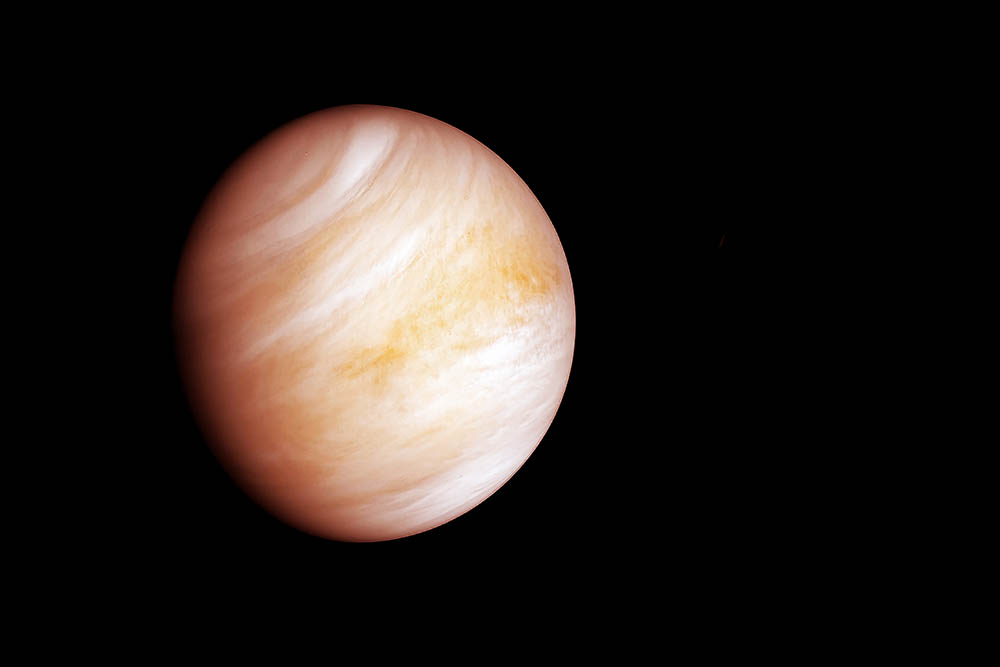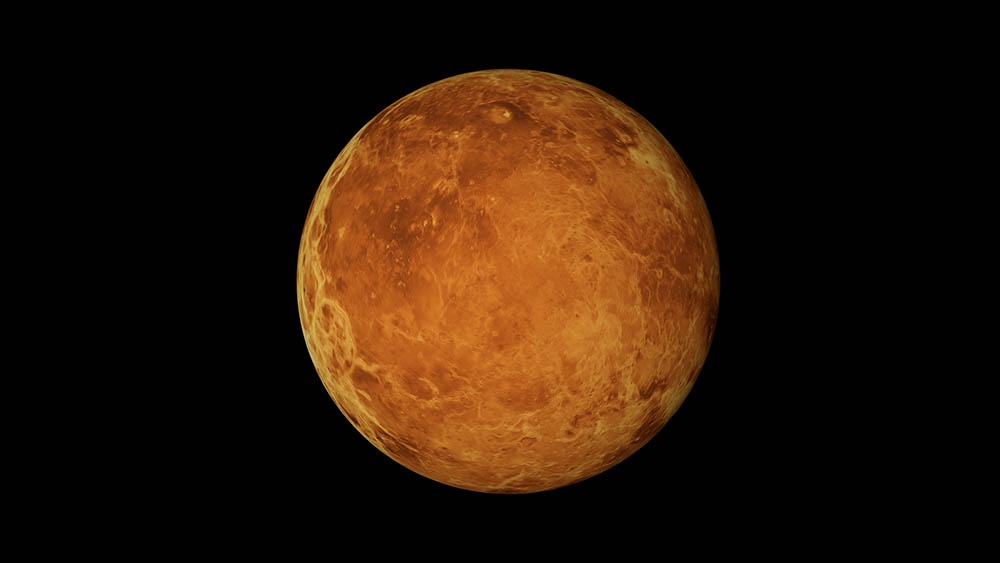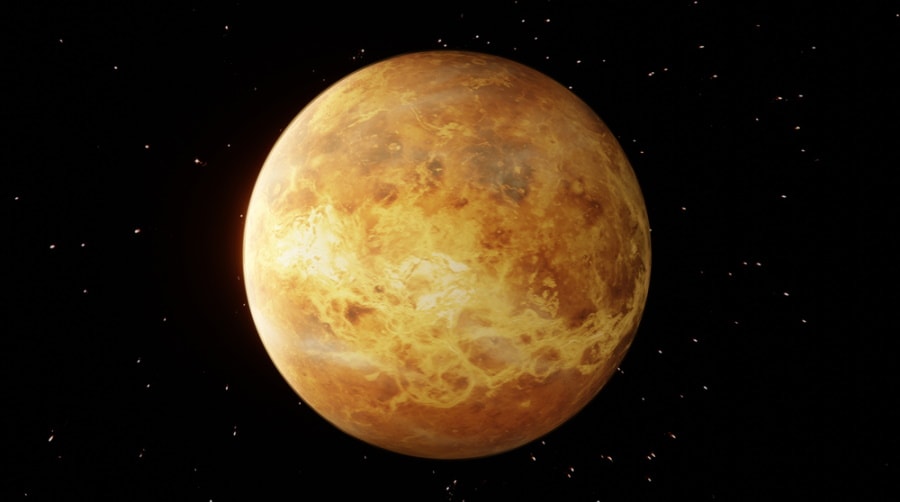How Long Is a Day on Venus? How Long Is a Year?
Last Updated on

You’d think that the Earth and Venus would have a lot in common, seeing as the two are the so-called sister planets. They’re not too different in size or circumference. Yet the 26,444,601 miles separating the two accounts for many things that make them worlds apart, including the lengths of their respective days and years.

A Day on Venus
One startling difference between a day on Venus compared to Earth starts with sunrise. While we look to the eastern sky, you’d have to face west to see it on the former. That’s because it spins in the opposite direction than our planet, although scientists aren’t sure how to account for the difference.
We know that a solar day is the time it takes for the Earth to rotate completely on its axis, or about 24 hours here. That action doesn’t happen nearly as fast on Venus. A day on this planet would equal about 243 Earth days.
That fact can also explain in part why Venus is virtually inhabitable. It has an extremely high surface temperature that can approach up to 900℉. Its thick atmosphere of sulfuric acid and carbon dioxide acts as a planetary blanket, trapping the heat.

A Year on Venus
We know that a year equals the time it takes for a planet to make a complete revolution around the Sun or 365 days on Earth. We can compare the numbers between our planet and Venus to understand this phenomenon and explain the differences. The orbit distance is almost 93 million miles for the Earth. It is roughly 67 million miles for Venus, or nearly 40% less. That gives the latter an edge.
Then, there is the orbit velocity. While we’re poking around at a mere 66,622 miles per hour, speedy Venus is tearing up the track at 78,339 miles per hour, or over 17% faster. These two sets of figures give Venus a year that lasts 225 Earth days.
Seasons on the Planets
Next, we’ll consider what a year looks like on both planets to put everything in perspective. That begins with the equatorial inclination or the angle with respect to the object’s equator. This figure goes from 0° to 180°. The Earth’s tilt is 23.4393° which explains our four seasons based on how the Sun’s rays are striking our part of the world. It’s a different story with Venus.
Remember that Venus spins in the opposite direction as the Earth, something scientists call a retrograde rotation. Its equatorial inclination is 177.3° which gives it only a minimal tilt of 2.7°. That lack of a significant tilt means that Venus doesn’t experience seasons as we do on Earth. The atmospheric conditions don’t change because of varying Sun rays.

Phases of Venus
Interestingly, Venus experiences different phases, something Galileo Galilei discovered back in the early 1600s. It’s not unlike our Moon that goes from new to full. Instead of the 28 days it takes on Earth, the entire cycle for Venus runs 584 days over four phases. It’s another piece of the puzzle of our nearest planetary neighbor. However, mysteries still remain.

Final Thoughts
Venus is one of five planets that the Ancients discovered. Its bright light made it impossible not to notice. Yet, as close as it is to Earth, it varies significantly in many ways, including the most fundamental aspects of days and years. Perhaps future space missions will answer the many puzzling questions about Venus. In the meantime, we can continue to look for it in the night sky and wonder about its other secrets.
Featured Image Credit: Artsiom P, Shutterstock
About the Author Chris Dinesen Rogers
Chris has been writing since 2009 on a variety of topics. Her motto with all of her writing is “science-based writing nurtured by education and critical thinking.” Chris specializes in science topics and has a special love for health and environmental topics, and animals of all shapes and sizes.
Related Articles:
How to Collimate Binoculars: 9 Expert Tips
Binocular Magnification Chart: Numbers & Distances Compared
How to Clean a Refractor Telescope: Step-by-Step Guide
How to Clean a Telescope Eyepiece: Step-by-Step Guide
What Is the Best Binocular Magnification for Hunting? Optical Features Explained
How to Clean a Rifle Scope: 8 Expert Tips
When Were Binoculars Invented? History, Today & Future
Can You Use Binoculars to Look At Stars? How to Choose the Right Pair
